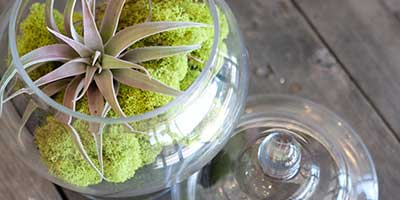Because the weather is still a little unpredictable doesn’t mean that you can’t start working on your garden now! Spring gardens take a lot of time to make sure that they’re planted and cared for properly to guarantee that they’re lush and vibrant for the months when you can enjoy and maintain them outside. Here at KaBloom, we know how planning the perfect flowers is very important, so with our help (and the help of the Old Farmer’s Almanac), you’ll be able to start planting and nurturing seedlings for your garden in time for the spring bloom.
The first thing you have to do is make sure you don’t plant too early. Usually, you should start planting annual plants and vegetables about six weeks before the expected last frost in your area. Enter your location at http://www.almanac.com/gardening/planting-dates/ for a better breakdown of when is the best time to start the process in your area. Even though you’re starting the process indoors, still check the seed package’s directions to see if there is any preparation the seeds need. Also, use clear containers, and poke holes in the sides to help air circulation.
Start the planting process by putting damp seedling mix, like soil less peat moss, into containers or pebbles, but make sure that you don’t use potting soil. You need to make sure that water and oxygen can freely circulate. Now, it comes time to actually put the seeds in. Follow the directions on the seed’s package and plant it just like you were outside, like how far down to bury it. Once it’s all set, cover it in plastic and poke some holes in the top so air can continue to circulate. Place the containers somewhere that has a natural bottom source of heat, like near a stove. The seedlings will do best between 65 and 75 degrees. Now that they’re all set, just water and wait.
Eventually, you’re going to notice that seedlings appear. This is when you take the plastic off and move it to a place with bright and natural light. Soon, you’ll notice that the seedlings are going to get a second pair of leaves. When this happens, it’s time to carefully move them to individual pots with potting mix and compost. Keep them out of direct sunlight for a few days, and make sure you water them well.
When the time to move them outside gets close, you have to begin the transition for the plants to adapt to outside life. For the last week, don’t fertilize and water them less frequently, because it will help the transition between indoor and outdoor life. For that last week, it is also helpful to move the potted plants outside to an area away from the sun and wind for a few hours, just to help them gradually get used to what they will be living in. Eventually, the big day will come, and it is time to move the plants carefully into the ground. If you can, move them on a cloudy morning, and try to move them to an area with loose soil to help water and air flow easier. Make sure you water around the area immediately, and it also might be a good idea to look into ways to help protect the plants from the shock of the cold for a few days until it is used to its new world.
It might seem like there’s a good amount of work involved in planning your outdoor spring garden indoors, but it’ll definitely be worth it to make sure you’re prepared for the nice weather! Don’t fall behind, because your plants could suffer. We know your garden is going to be absolutely beautiful and worth the extra effort! Stay tuned for more updates!













